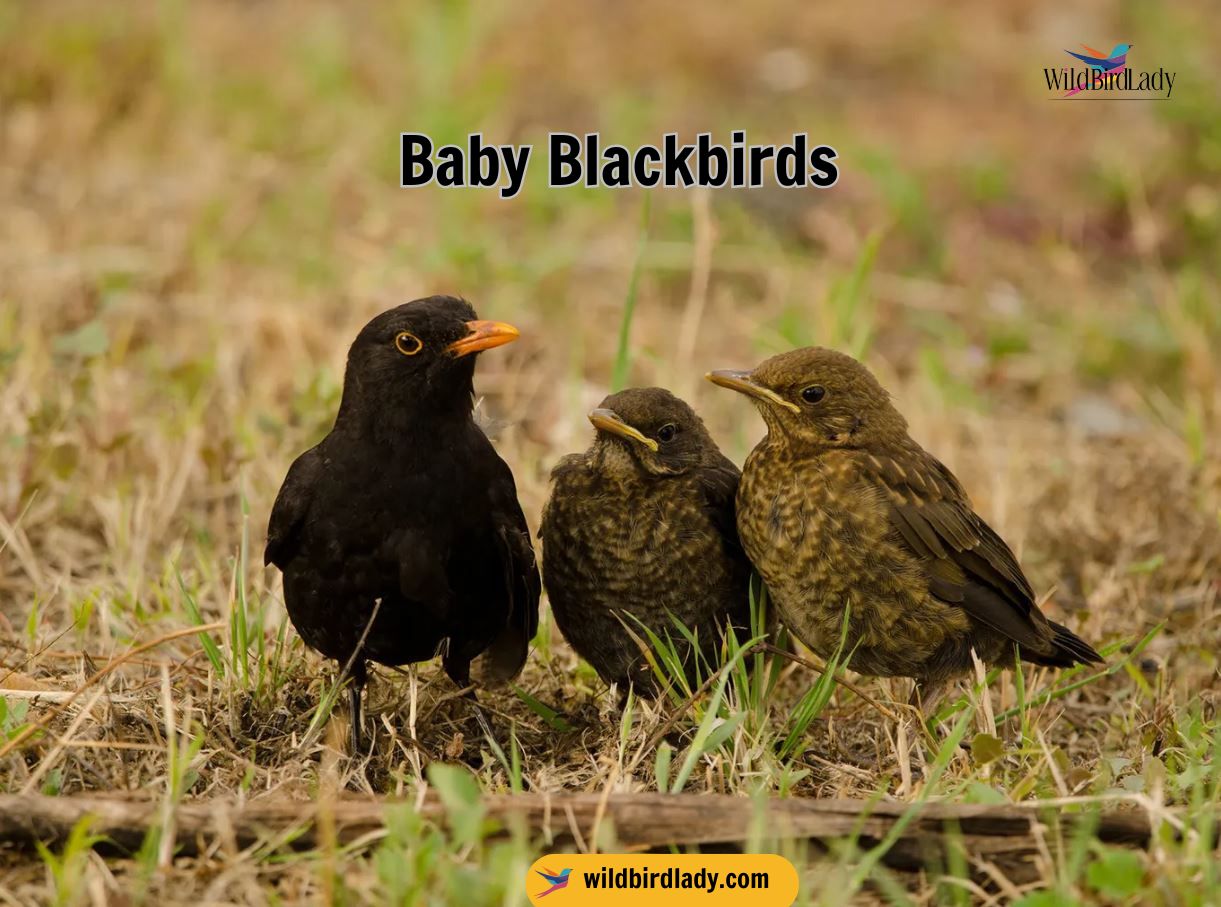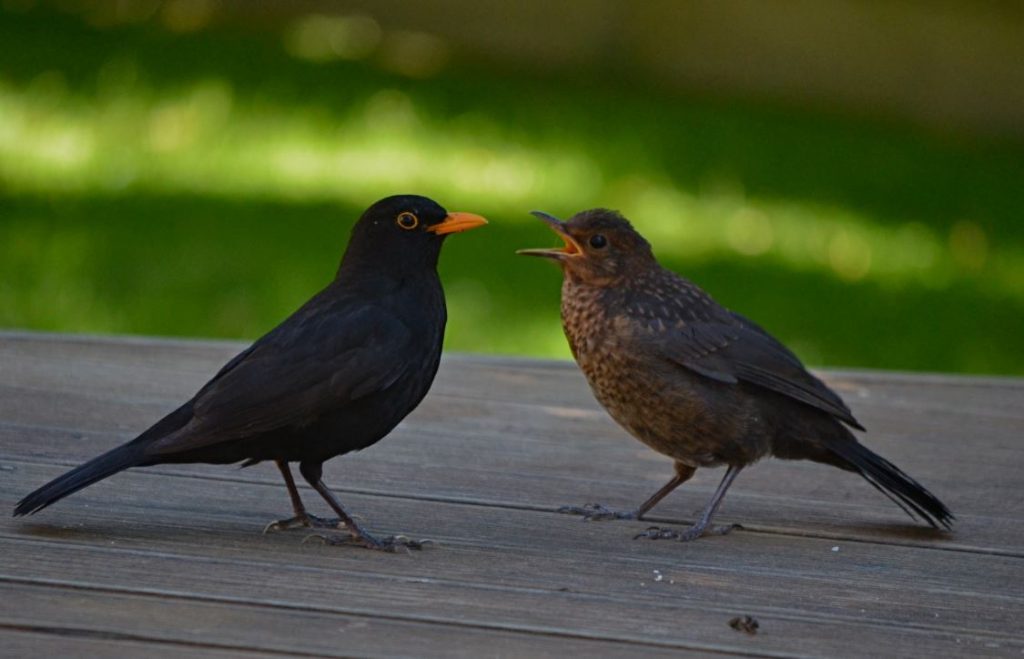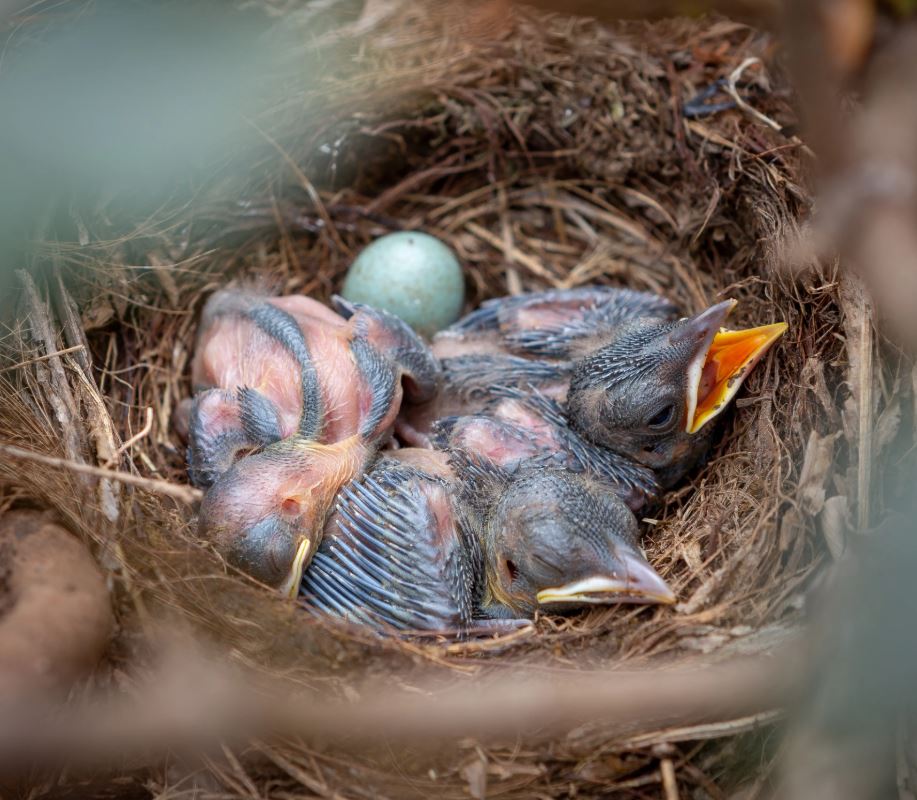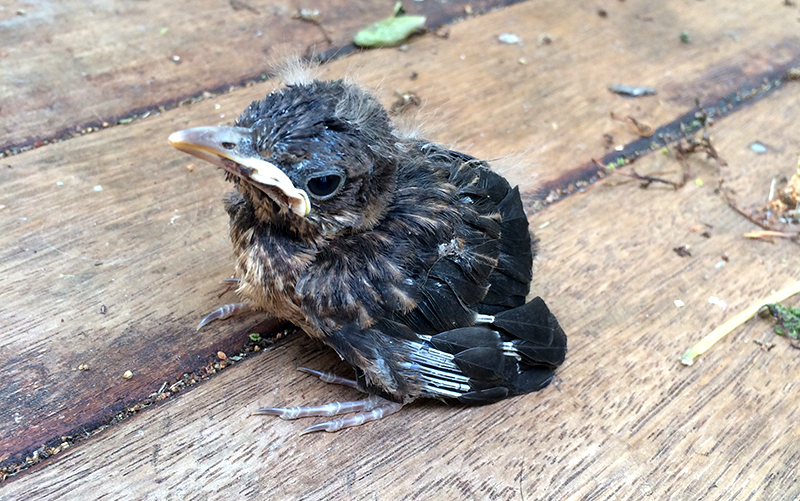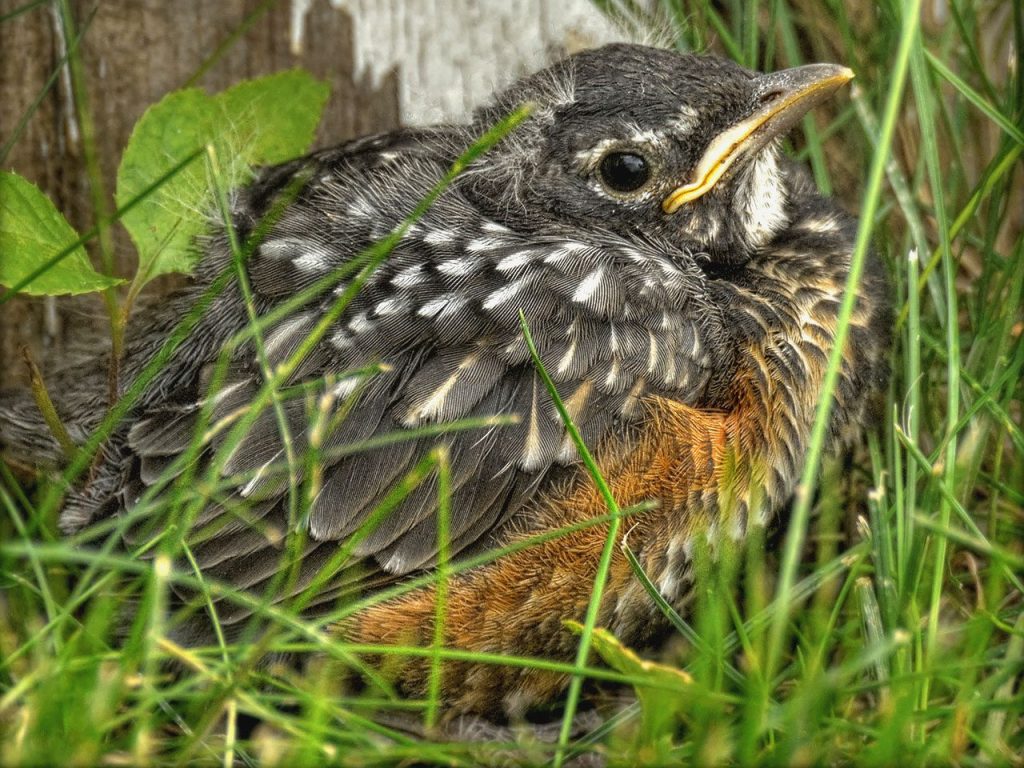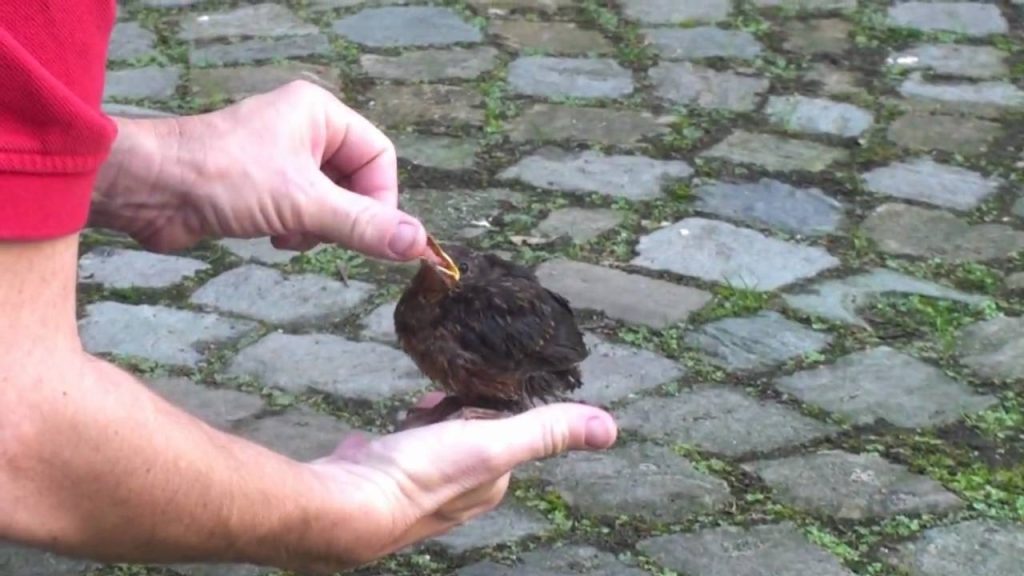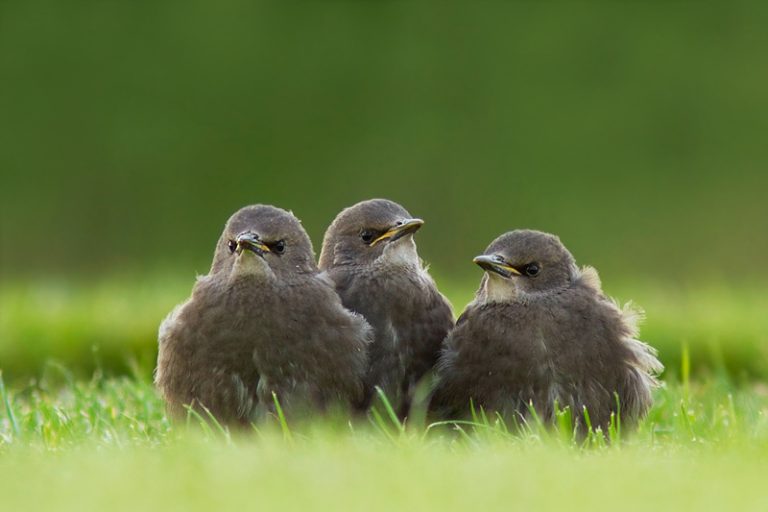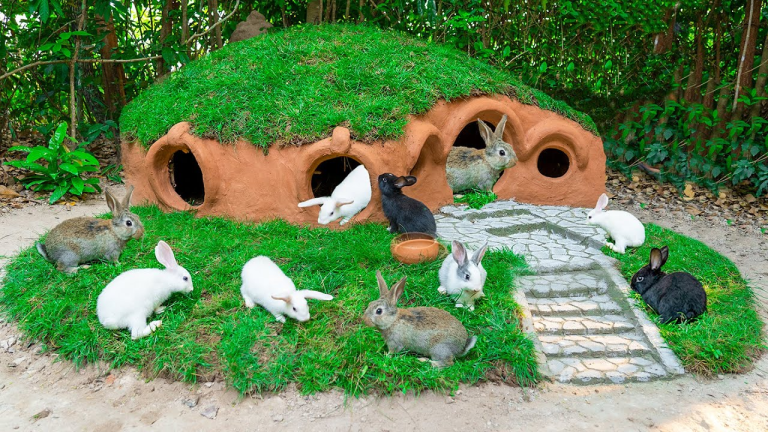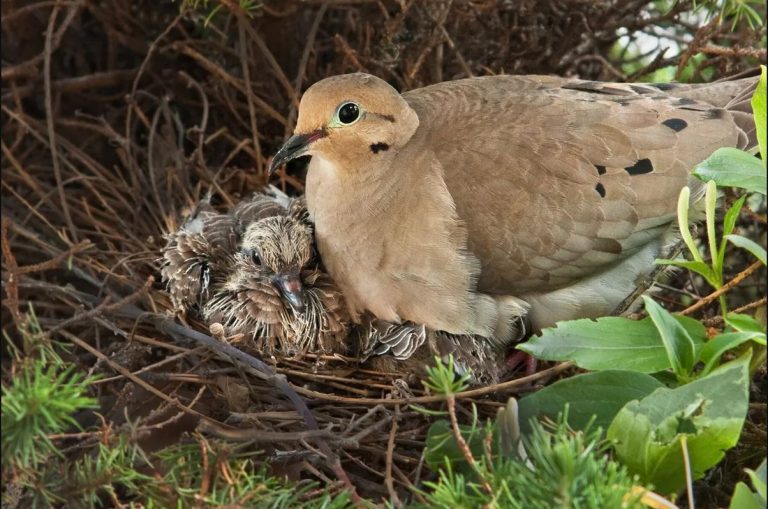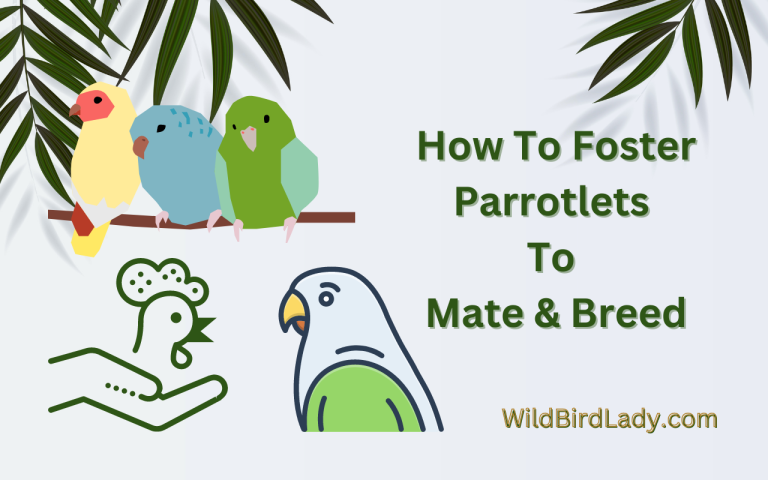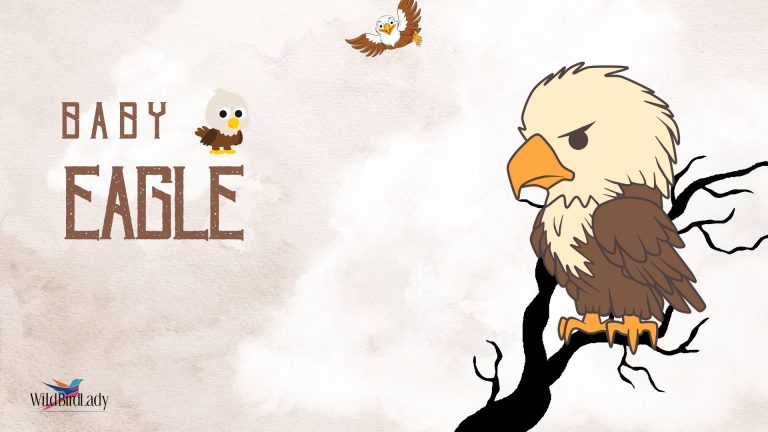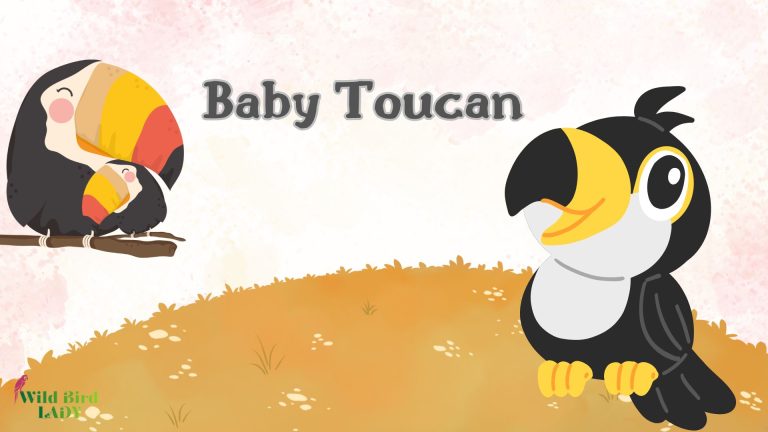Baby Blackbird: A Complete Guide to Nestlings, Fledglings, and How to Help Them Thrive
As a birdwatcher with over 13 years of field experience, I’ve had the privilege of observing countless baby birds grow from fragile hatchlings to confident flyers. Among the most fascinating is the baby blackbird—a common but often misunderstood young songbird that captures the hearts of backyard bird enthusiasts. In this guide, we’ll take a deep dive into everything you need to know about baby blackbirds, from how they look and behave to how you can help them survive in your backyard.
Introduction to the Common Blackbird
The Eurasian Blackbird (Turdus merula), often simply called the “blackbird,” is one of the most recognizable songbirds across Europe and parts of Asia. Males are jet black with bright yellow beaks and eye-rings, while females are brown with streaked underparts.
This species is a member of the thrush family and is closely related to American robins. Baby blackbirds, though common in gardens and parks, go through dramatic transformations that many people never notice.
Fact: According to the Royal Society for the Protection of Birds (RSPB), blackbirds are among the top 10 most frequently recorded garden birds in the UK.
What Is a Baby Blackbird Called?
Baby blackbirds go by different names depending on their stage of development:
- Hatchling – newly emerged from the egg, usually blind and featherless.
- Nestling – still in the nest, eyes open, partially feathered.
- Fledgling – has left the nest but still dependent on parents for food and guidance.
Understanding these terms is important because how you respond to a baby bird depends on what stage it’s in.
Baby Blackbird Appearance by Stage
Hatchlings (0–3 days old)
Hatchlings are extremely vulnerable—blind, naked, and completely dependent on their parents. Their skin is reddish and almost translucent, showing veins beneath the surface. They can’t regulate their body temperature and must be brooded constantly.
Nestlings (3–13 days old)
Nestlings develop quickly. They begin to grow downy feathers and open their eyes around day 4. Pin feathers (spikes containing developing feathers) emerge shortly after. Their beaks are wide and yellow at the corners, known as the “gape,” which stimulates feeding by the parents.
Fledglings (13–15 days old)
By the time they fledge, baby blackbirds are almost fully feathered but may have a short tail and some downy tufts. They often hop awkwardly and hide in bushes or long grass. This stage is critical for learning survival skills.
Note: Fledglings may appear abandoned, but parents are usually nearby watching and feeding every few minutes.
How Long Do Baby Blackbirds Stay in the Nest?
On average, blackbird chicks stay in the nest for 12 to 15 days after hatching. During this period, both parents feed them constantly, sometimes bringing food every few minutes. After leaving the nest, fledglings remain dependent for another 2–3 weeks.
According to the British Trust for Ornithology (BTO), blackbird breeding season runs from March through July, and a pair may raise two or even three broods per season.
What Do Baby Blackbirds Eat?
In the wild, baby blackbirds are fed a high-protein diet:
- Insects: caterpillars, beetles, and earthworms
- Spiders
- Occasional berries (as they grow older)
The adult blackbirds prioritize soft-bodied insects for their chicks because they’re easy to digest and rich in nutrients. As chicks grow, their diet shifts slightly to include more fruit and seeds.
How Baby Blackbirds Learn to Fly
Flight is not immediate after fledging. Baby blackbirds spend several days hopping and flapping short distances before taking full flight. During this time, parents continue to feed and protect them while they develop strength and coordination.
Observation Tip: If you see a fledgling flapping its wings and calling but not flying far, it’s likely still in this crucial learning phase.
Where You’ll Find Baby Blackbirds
Baby blackbirds are typically found in:
- Hedgerows
- Bushes and shrubs
- Gardens and park trees
- Ivy-covered walls or fences
Blackbirds are ground-foraging birds, so you might also spot fledglings hiding under foliage or near the base of a tree.
Baby Blackbird Sounds and Communication
Even before they can fly, baby blackbirds vocalize with high-pitched begging calls. This sound cues the parents to deliver food. As they mature, fledglings begin mimicking adult calls and learning territorial songs.
How to Tell if a Baby Blackbird Is in Trouble
Not all baby blackbirds you find need help. Here’s how to assess the situation:
| Behavior | Likely Condition |
|---|---|
| Hopping, alert, no visible injury | Normal fledgling |
| Lying on the ground, shivering | May be injured or orphaned |
| Cold and unresponsive | Needs urgent help |
Only intervene if the bird is clearly injured, in danger, or has no parents nearby after at least 1 hour of observation.
What to Do if You Find a Baby Blackbird (Detailed Guidance)
Finding a baby blackbird on the ground can be alarming, but it’s important to stay calm and assess the situation before intervening. Here’s a step-by-step guide to ensure you act in the bird’s best interest:
Step 1: Identify Its Development Stage
- Nestling (0–13 days old): If the baby bird is mostly featherless or only has downy feathers and cannot stand or hop, it’s a nestling. Nestlings should not be out of the nest.
- Fledgling (13+ days old): If the bird is fully feathered with a short tail, alert, hopping, and calling, it is a fledgling. Fledglings naturally leave the nest before they can fly well.
Tip: Fledglings might appear helpless, but they are undergoing a critical learning phase. Unless visibly injured, they should be left alone.
Step 2: Check for Immediate Dangers
Scan the area for threats:
- Is the bird close to a road, driveway, or heavily trafficked area?
- Are there cats, dogs, or other predators nearby?
- Is the weather cold, rainy, or dangerously hot?
If any of these conditions apply, you may need to relocate the bird slightly to nearby dense shrubs or undergrowth—no more than a few feet away—to provide safety and concealment while keeping it in sight of the parents.
Step 3: Observe from a Distance
Blackbird parents are highly attentive and usually continue feeding their fledglings even after they leave the nest. Stay back at least 10–15 feet and watch for 30–60 minutes.
- If you see a parent bird returning to feed the baby, do not interfere.
- If no adult appears after an hour, and the baby is shivering or weak, it may need help.
Step 4: Avoid Feeding or Handling
Feeding a baby bird the wrong food (like bread, milk, or seeds) can cause internal damage or death. Never attempt to feed a baby bird unless under direct guidance from a licensed wildlife rehabilitator.
Likewise, do not attempt to hand-raise a baby blackbird. In most places, it’s illegal to keep wild birds without a permit.
Step 5: Call a Wildlife Rescue if Necessary
Contact a licensed wildlife rehabilitator or local bird rescue organization if:
- The baby is visibly injured (e.g., bleeding, broken wing)
- The bird is cold, weak, or lethargic with no parental contact
- The nest has been destroyed and cannot be restored
You can find licensed rehabilitators through national organizations like:
Remember, well-meaning interference often does more harm than good—always observe first, act second.
How to Help Baby Blackbirds in Your Garden (Practical Tips)
Supporting baby blackbirds doesn’t require raising them yourself. The best help is providing a safe, natural environment where they can grow under the care of their parents. Here’s how:
1. Avoid Hedge Cutting or Pruning During Breeding Season
From March through July, blackbirds often nest in hedges, shrubs, and thick garden foliage. Trimming or disturbing these areas may:
- Expose active nests to predators or weather
- Cause parents to abandon their chicks
- Accidentally destroy nests with eggs or young
Legal note (UK): Under the Wildlife and Countryside Act 1981, it is illegal to destroy an active nest.
2. Provide Natural, Nutritious Food
Parent blackbirds feed their young mostly insects, worms, and caterpillars. You can supplement their diet in your garden by:
- Offering live or dried mealworms (soaked in warm water)
- Providing moist raisins (soaked to avoid choking)
- Avoiding dry seed mixes for babies—these are more suited to adults
Place food on the ground or low platforms to mimic blackbirds’ natural foraging behavior.
3. Install a Shallow Birdbath
Young blackbirds, especially in hot weather, need water for both drinking and bathing. A birdbath should:
- Be no more than 2 inches deep
- Have gentle slopes for easy access
- Be cleaned regularly to prevent bacteria buildup
Add a flat stone in the center for fledglings to perch on safely.
4. Create a Safe Haven with Bushes and Ground Cover
Baby blackbirds, especially fledglings, hide in ground-level vegetation. Enhance your garden with:
- Native shrubs like hawthorn, holly, or elder
- Leaf piles or dense grass clumps
- Ivy-covered fences or log piles
This natural cover helps them stay hidden from predators and reduces stress during development.
5. Minimize Pet Disturbance
Cats are among the biggest threats to fledgling birds. To reduce risk:
- Keep cats indoors, especially during peak nesting months
- Use cat bells or brightly colored collars to warn birds
- Supervise dogs around nesting areas
If outdoor pets are unavoidable, consider using deterrent plants or fencing to create pet-free zones in bird hotspots.
Field Tip: I’ve found that even a small 6-foot circle of dense vegetation can serve as an effective “fledgling nursery” if left undisturbed.
Predators and Threats to Baby Blackbirds
Common predators and dangers include:
- Domestic cats
- Magpies and crows (nest raiders)
- Foxes and hedgehogs
- Pesticides affecting insect supply
- Window collisions (once they begin flying)
Tip: Use window decals or screens to reduce strike risk.
When Baby Blackbirds Leave the Nest
Fledglings leave the nest before they can fly well, but this is normal. Their parents stay with them, often for two to three weeks, feeding and guiding them.
It’s important to resist the urge to “rescue” a healthy fledgling. Removing it from the wild reduces its chance of survival.
FAQs About Baby Blackbirds
Q1: Do baby blackbirds return to the nest after fledging?
A: No. Once they leave, they don’t return to the nest.
Q2: How many chicks do blackbirds usually have?
A: 3 to 5 chicks per clutch, and up to three clutches per season.
Q3: Can I feed a baby blackbird?
A: Only under wildlife rehab supervision. Improper feeding can be deadly.
Q4: When do blackbird chicks get their black feathers?
A: Males begin developing darker plumage around 6–8 weeks old, but they won’t resemble adults until later in the season.
Final Thoughts
Baby blackbirds might be small and silent at first, but they represent one of the most rewarding parts of the birdwatching cycle. From their wide yellow gapes to their comical first hops, these young birds remind us of nature’s delicate balance and the vital role we play in protecting it.
Whether you’re watching from your garden or helping educate others about fledgling behavior, understanding the life of a baby blackbird can transform your relationship with backyard wildlife.
Read also: Baby Mallard Duck: A Complete Guide to Their Growth, Behavior, and Survival

